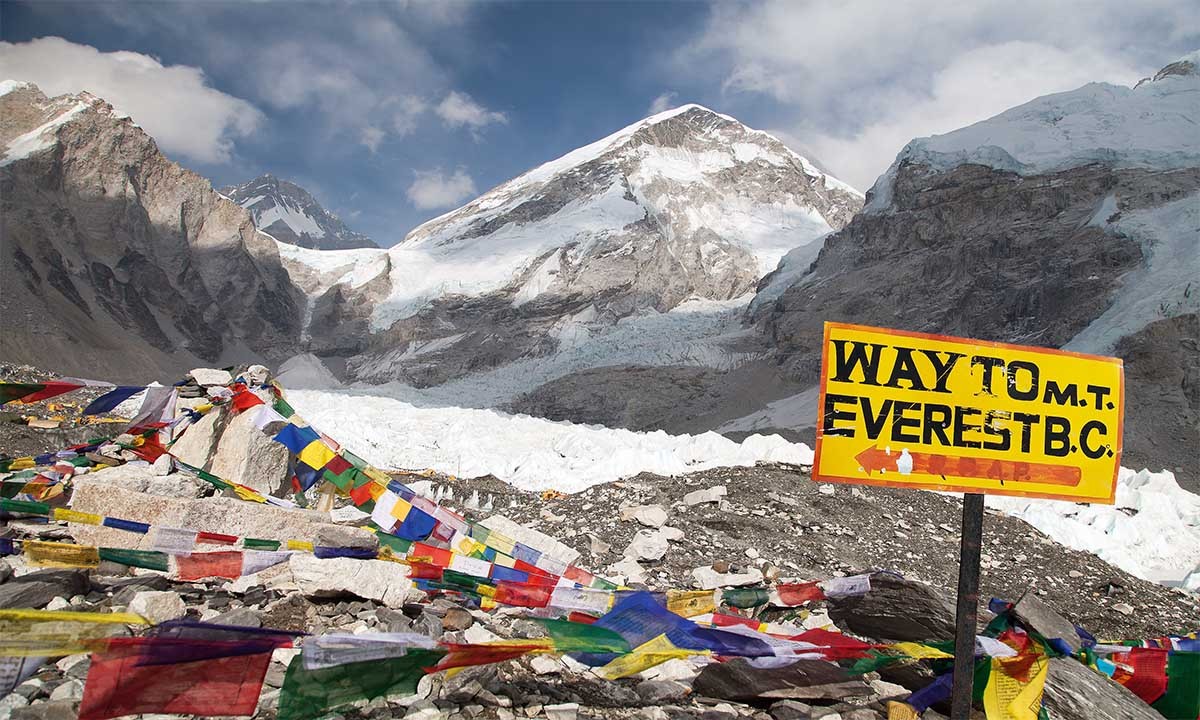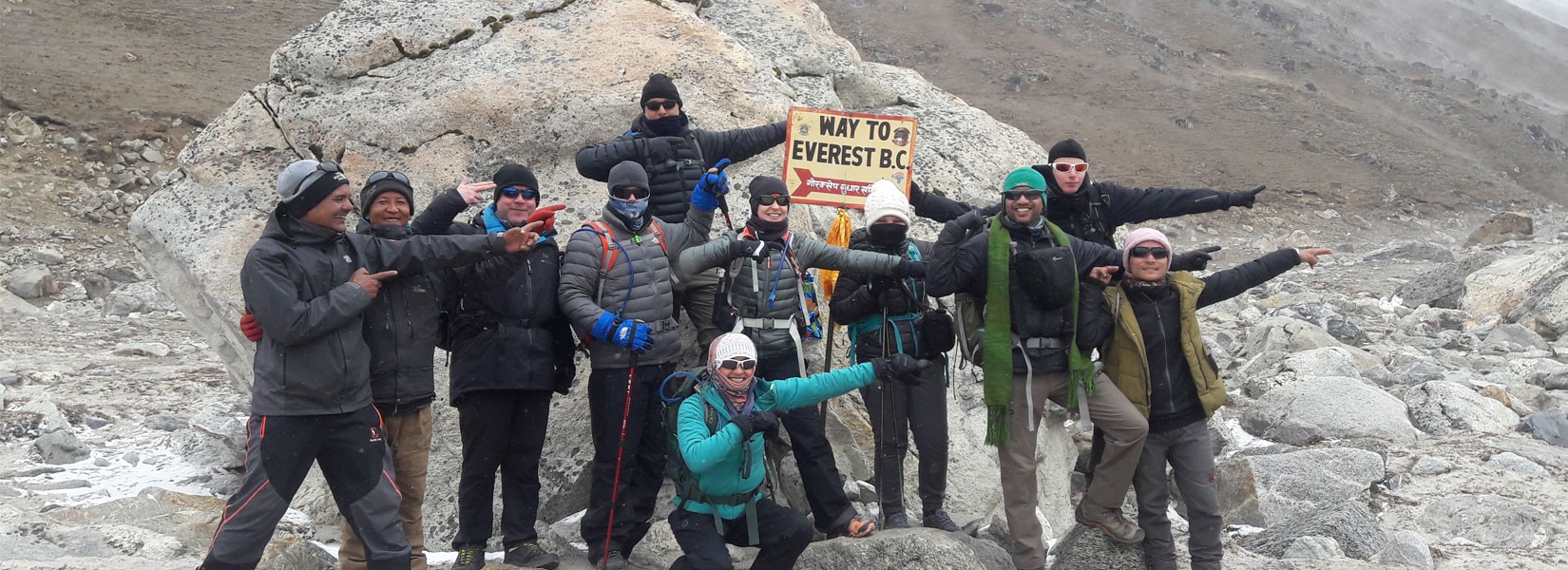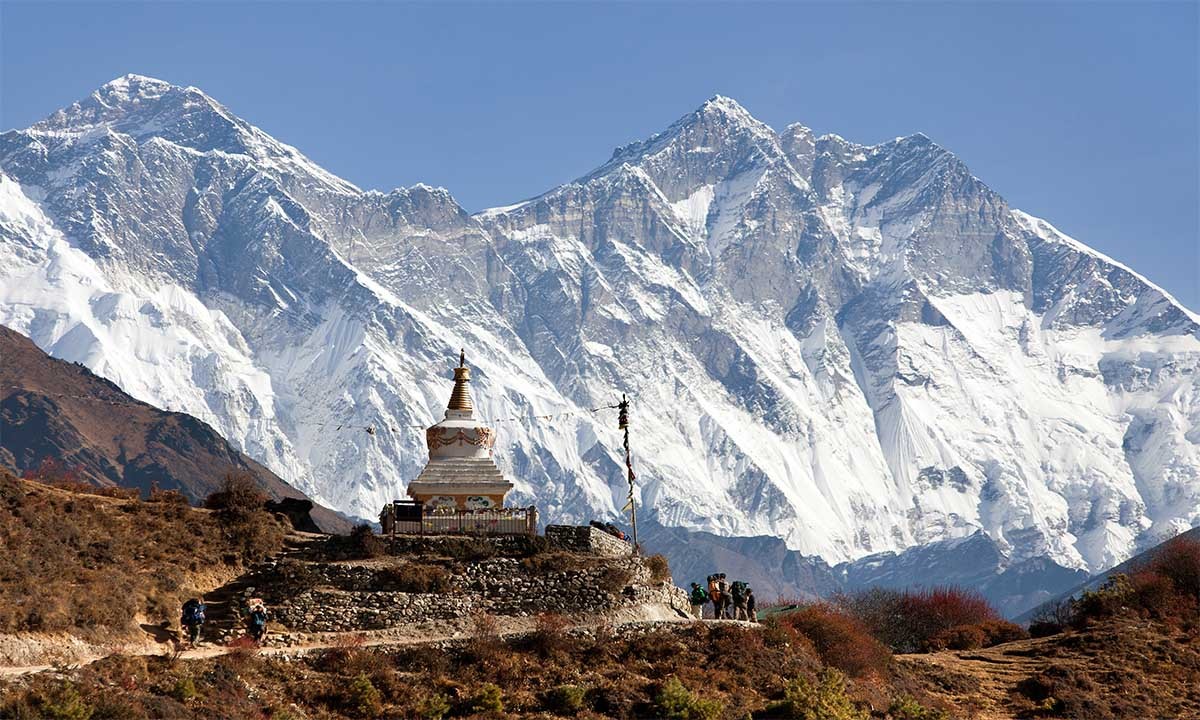
Why Choose Salleri Over Lukla?
Choosing an overland journey over a swift flight to Lukla to trek to Everest Base Camp might not make sense to all. If you are also wondering why one should choose Salleri over Lukla, then Marvel Adventure has answers for you.
To avoid flight delays
The most significant reason is the option to avoid flight delays. The unpredictable weather in the Himalayas leads to frequent cancellations or delays of flights in Lukla. If you choose to travel via Salleri, you can reduce those uncertainties.
For a scenic overland journey
The jeep ride from Kathmandu to Salleri and even to Surke offers wonderful views of the mid-hills of Nepal. You can see terraced hillsides, and rivers as well as forests, providing a visual treat.
To trek on quieter trails
The roads and trails from Salleri are less crowded than the regular Lukla route. From Surke, you can trek on peaceful trails through Rai and Sherpa villages. It is the perfect chance to enjoy your walk in solitude amidst the Himalayas.
For better acclimatization
The altitude gain for your trek begins gradually, from Salleri (2,390m) to Surke to Phakding and so on. This reduces the risk of altitude sickness to an extent as compared to flying directly to Lukla, which is at an altitude of 2,860m.
To support local communities
The Salleri to Everest Base Camp trek requires you to pass through less-traveled villages. Choosing this route means the expenses you make during your stays here contribute to the livelihoods of the locals.
Trek Difficulty Level: What Affects It?
The Salleri to Everest Base Camp trek is considered moderately challenging. It involves two weeks of continuous trekking. It covers diverse terrain, from low hills to alpine landscapes. Nonetheless, the trip difficulty is not dependent on one factor only.
Here are some prominent key factors that help you determine its difficulty:
Altitude gain
There is a significant altitude gain during the Salleri to Everest Base Camp trek. Starting from 2,369m at Salleri, you ascend to Kalapatthar at 5,545m. Despite the gradual ascent, you go above 5,000m. This indicates that the risk of altitude sickness persists. Also, climbing to areas with a thinner oxygen level is level puts more strain on the body, making the trek difficult.
Daily trek hours
Every day, you need to walk 5 to 8 hours if you want to complete the Salleri to Everest Base Camp trek. Walking at higher altitudes and over rugged terrain requires more physical effort. You cannot stop until you reach your destination, which is definitely not easy.
Trail conditions
The trek requires you to walk on steep trails. They are rocky, too. At higher altitudes, especially when trekking from Gorakshep to Everest Base Camp or Kalapatthar, you need to tread over loose rocks. They can make the path unstable and slippery. Occasional icy paths are also a part of this trek, adding to the difficulty level.
Basic facilities
Mostly, you will be staying at lodges and teahouses. But they are not well-equipped with all the required facilities, especially in higher altitudes. You need to compromise on basic facilities. You might take it as a difficult experience to rest in places with just the basic conditions after walking for long hours every day.
Unpredictable weather conditions
The weather conditions tend to change quickly after 4,000m. You can expect cold, wind, and snow in a matter of time. This makes the trek difficult as you need to battle with the challenges of the changing weather.
Long trek duration
The Salleri to Everest Base Camp trek is 15 days in total. It is longer than other Everest Base Camp treks, which are usually of 10-12 days. The addition of even one more day in the itinerary means more time on trails with basic conditions. It is not an easy experience for all.
Preparing for the Trek
If you are an experienced trekker with good mental and physical fitness, then you can do the Sallerti to Everest Base Camp trek. The experiences and fitness are a must as you need to walk through rough trails and ascend to high altitudes.
You may trek to this region as a beginner, too. But before that, you must train yourself to be able to traverse the terrain and face its challenges.
Opt for the following preparations to navigate the Salleri to Everest Base Camp trek with ease:
Physical Training
The level of your physical endurance and cardio are the most important factors that determine the success of your trek. They must be good enough to deal with the challenges you face while on this trek. Therefore, start to train yourself physically at least 6 to 8 weeks before embarking on this trek.
To enhance your physical endurance, opt for strength training. Push-ups, squats, planks and mountain climbs are some of the activities that make your body strong. Hike with a loaded backpack. Climb stairs to build the strength needed for uphill sections in the trek.
Also, perform cardio training to improve the performance of your heart and lungs. Hiking, cycling and jogging help with this.
Mental Preparation
The trek is more than a physical endeavor. It can be mentally taxing, too, given the continuous walk along rough terrain and high altitudes. You are unable to complete the trek if you are not mentally prepared for these factors. So, be ready for long trekking days, limited comfort, fatigue, weather delays and unforeseen circumstances.
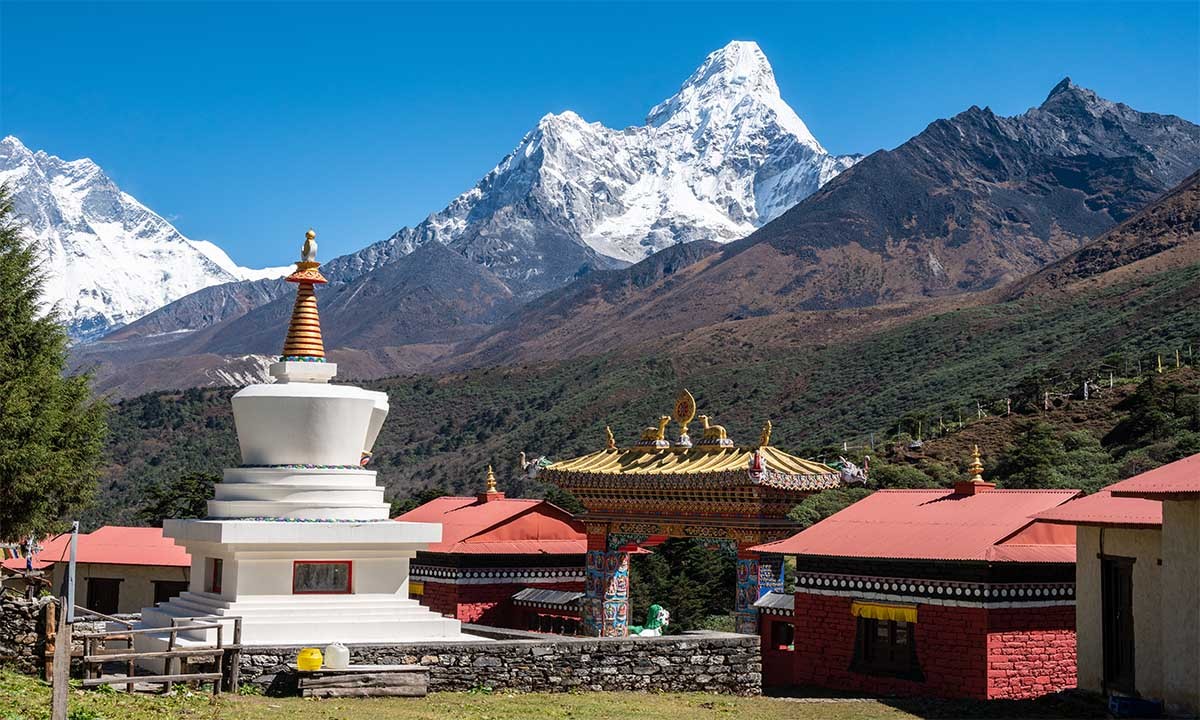
Best Time for Salleri to Everest Base Camp Trek
Autumn and spring offer the best conditions for the Salleri to Everest Base Camp trek. They are peak trekking seasons in Nepal. They offer safe trails, clear views and stable weather. All these features ensure a comfortable journey. Yet it is possible to complete this trek at any time of the year with some caution.
Check out the season-wise suitability of this trek:
Spring: March to May
The spring months are known for moderate weather, suitable for trekking. The daytime temperature in Salleri ranges between 15°C and 20°C. At night, it is between 5°C and 10°C. You can expect it to dip as low as 2°C to 6°C in Gorkashep during the day. At night, it is between -10°C and -15°C
The average daytime temperatures, therefore, are mild enough to allow you a comfortable trek. Overall, the weather is stable and leads to good visibility of the area. The longer daylight hours let you trek conveniently. Meanwhile, rhododendron forests in full bloom present a magnificent view of your trekking trail.
The area is crowded in spring, yet it is not that busy compared to autumn. All these factors make spring one of the best seasons to trek to Everest Base Camp from Salleri.
Autumn: September to November
Choose autumn months for the Salleri to Everest Base Camp trek if you want to get good views of mountains, stable weather and a festive ambiance.
As autumn is the post-monsoon season in Nepal, you get to see clear views of the Himalayas amidst the clear skies.
The temperatures are between 14°C to 18°C in Salleri during the day while they range from 4°C to 8°C at night. Gorakshep records between 0°C and 4°C during the day and -10°C to -18°C at night. They are suitable for trekking with a comfortable experience.
Autumn also heralds some of the prominent Nepali festivals, Dashain and Tihar. It adds a memorable cultural element to your trek.
It is a peak trekking season in Nepal which makes the trail crowded. Yet the fact is that the trails are well-managed and all the lodges and teahouses remain open.
Winter: December to February
Winter months are colder with temperatures between 8°C to 12°C during the day and 0°C to 4°C at night in Salleri. But in Gorakshep, they range between -5°C to 0°C in the daytime. Nighttime temperatures can be extreme, ranging from -18°C to -25°C.
As such, there are chances of snowfalls, which make the trails slippery and can even block the trails. Cold weather also means the chances of teahouses remaining closed at higher altitudes.
Some of the benefits of winter trek are: Chances to trek in solitude, as there are fewer trekkers on the trail and the best visibility offered by clear skies.
Monsoon: June to August
Salleri records daytime temperatures ranging from 20°C to 25°C and at night, it is from 12°C to 16°C. You can expect temperatures between 5°C and 8°C during the day and -5°C to -10°C at night in Gorakshep.
The best feature of this season are the lush greenery in the lower hills. But the frequent heavy rains make the trails muddy. There is a risk of landslides and the trek is not ideal for a high-altitude section.
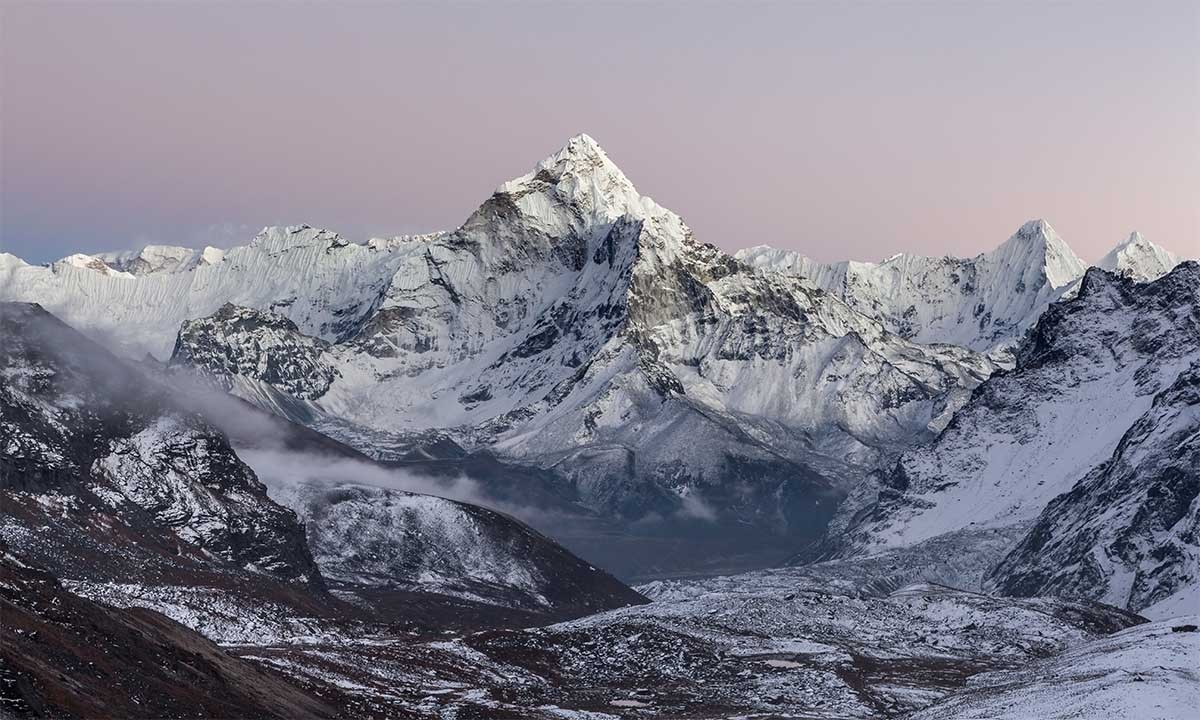
What to Pack for the Salleri to Everest Base Camp trek?
Trekking for over two weeks requires you to carry all the basic personal and trek essentials either in your backpack or luggage. The items should comprise everything from clothes needed to deal with changing weather to trekking gear to personal care items.
Here are some suggestions on what you need to bring with you during the Salleri to Everest Base Camp trek so that you can pack accordingly:
Clothing in layers
- Base-layer garments that absorb moisture, like thermal tops and bottoms
- Mid-layer clothes that trap body heat to keep you warm, like a fleece jacket, pullover, lightweight down jacket or synthetic jacket
- Outer-layer outfits that shield from wind and rain, like hardshell rain jackets and pants as well as a windproof softshell jacket
- T-shirts that dry quickly
- Two pairs of gloves, which include a light pair and a warm, insulated pair
- Wool hat or beanie
- Buff or neck gaiter
- Warm and comfortable sleepwear
- Undergarments
Comfortable footwear
- Waterproof and broken-in trekking boots
- Shoes or slippers to wear in teahouses and lodges
- Multiple pairs of wool and synthetic socks
Trekking Gear and other essentials
- Backpack and daypack
- Sleeping bag rated for winter
- Trekking poles
- Headlamp with spare batteries
- Reusable water bottle or bladder
- Dry bags or packing cubes
- Camera or phone with storage, power bank, universal adapter and charging cables
- Cash
Personal and health items
- Sunglasses with a UV-protection feature
- Sunscreens and lip balm
- Hand sanitizer
- Quick-dry towel
- Basic toiletries including toothbrush, toothpaste, biodegradable soap, wet wipes and toilet paper
- First-aid kit comprising painkillers, blister care and high altitude medicines
- Rehydration salt or electrolyte powders
- Personal medications
Food and Accommodation
You will stay in lodges or teahouses during the Salleri to Everest Base Camp trek. They provide basic lodging facilities to the trekkers. Yet they are comfortable and address your basic needs.
You can expect simple rooms that are furnished with twin beds. You get blankets. But the bathrooms need to be shared. The quality of these facilities is better in lower elevations than in higher altitudes. It becomes simple as you climb higher during the trek.
The food menus are simple yet promise warm and fresh home-cooked meals that are good for your health. Look forward to delicious Dal Bhat, one of the most commonly available and filling combinations of rice, lentil soup, vegetables and spices. The other options include fried rice, momos, noodles, pancakes and soups. Tea and coffee are readily available during the trek.
But you can carry some snacks and energy bars to satiate your hunger during long walking days and for a change of taste.
Permits and Insurance
Trek permits
To undertake the Everest Base Camp via Salleri, the trekkers need the following permits. Usually, trekking companies take care of these permits for their clients. You will need:
- Sagarmatha National Park Entry Permit
- Khumbu Pasang Lhamu Rural Municipality Permit
Travel Insurance
You must have valid travel insurance before starting your trek to Everest Base Camp via Salleri. So, get a policy that provides you with a security scheme for the entire trek.
Make sure that it covers helicopter rescue in case of emergency, medical expenses, personal injuries, loss of luggage and unforeseen cancellation of flights that do not provide a refund.
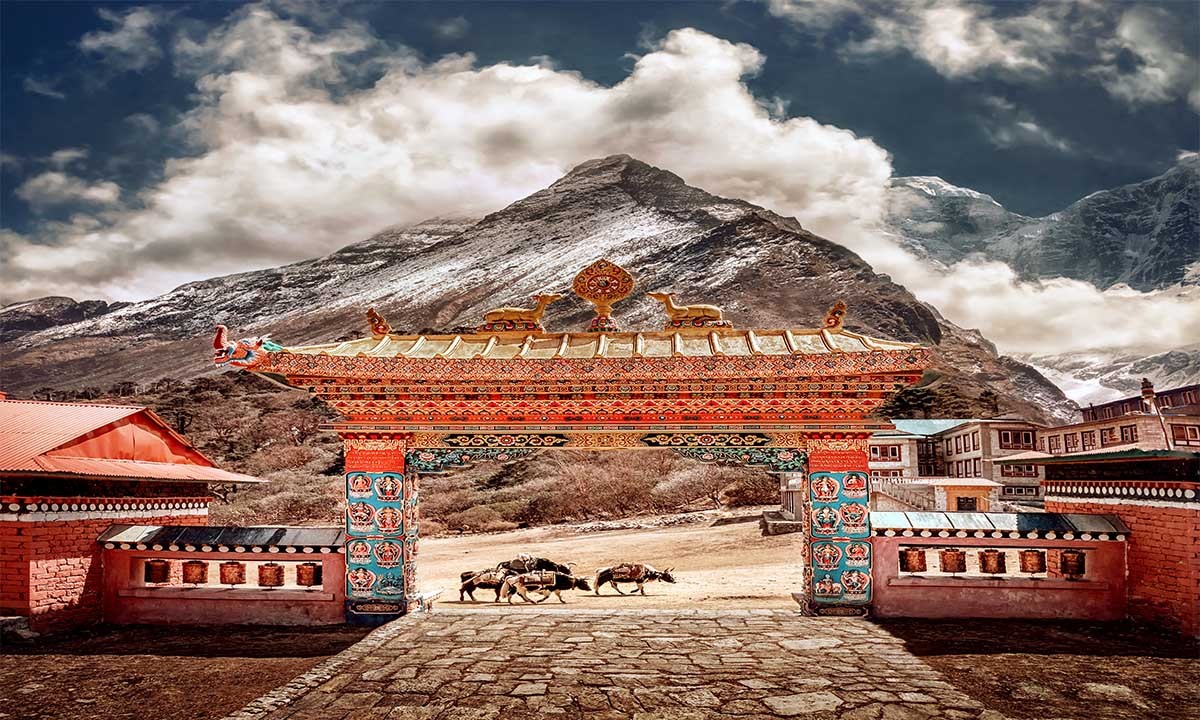
Acclimatization for Safe Trek
The trek from Salleri to Everest Base Camp is one of the highest treks in the world. Climbing above 5,000m is an integral part of this adventure. So, there is a high chance for trekkers on this route to suffer from altitude-related issues like Acute Mountain Sickness (AMS). So, you conquer this journey only with proper preparation for altitude sickness.
For that, you need to be careful not to rush the walk. Enjoy the trek at your gradual pace, letting your body get accustomed to the environment you ascend to. Hurrying to reach the destination worsens things, preventing your body from acclimatizing.
Even when choosing your Everest Base Camp trek package, make sure that it has enough days for acclimatization. Otherwise, you have a high chance of getting AMS despite proper physical training and mental preparation before the trek.
Also, make sure your daily water intake is at least 3-4 liters during the trek. Staying hydrated is mandatory to deal with the quick water loss from your body at higher altitudes.
But that does not allow you to drink alcohol as it hinders with acclimatization process. Avoid smoking, too.
Despite all the precautions, you might show the symptoms of altitude sickness. Its primary symptoms include:
- Lack of appetite
- Nausea and vomiting
- Dizziness or lightheadedness
- Fatigue and weaknesses
- Shortness of breath
- Sleeping difficulties
- Nosebleed
- Drowsiness
- Rapid pulse
If such symptoms persist, you should inform your guide about your condition. Guides and porters associated with Marvel Adventure are trained in basic medical skills. With their experience and expertise, they can help you in case of an emergency.
